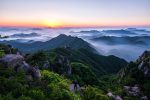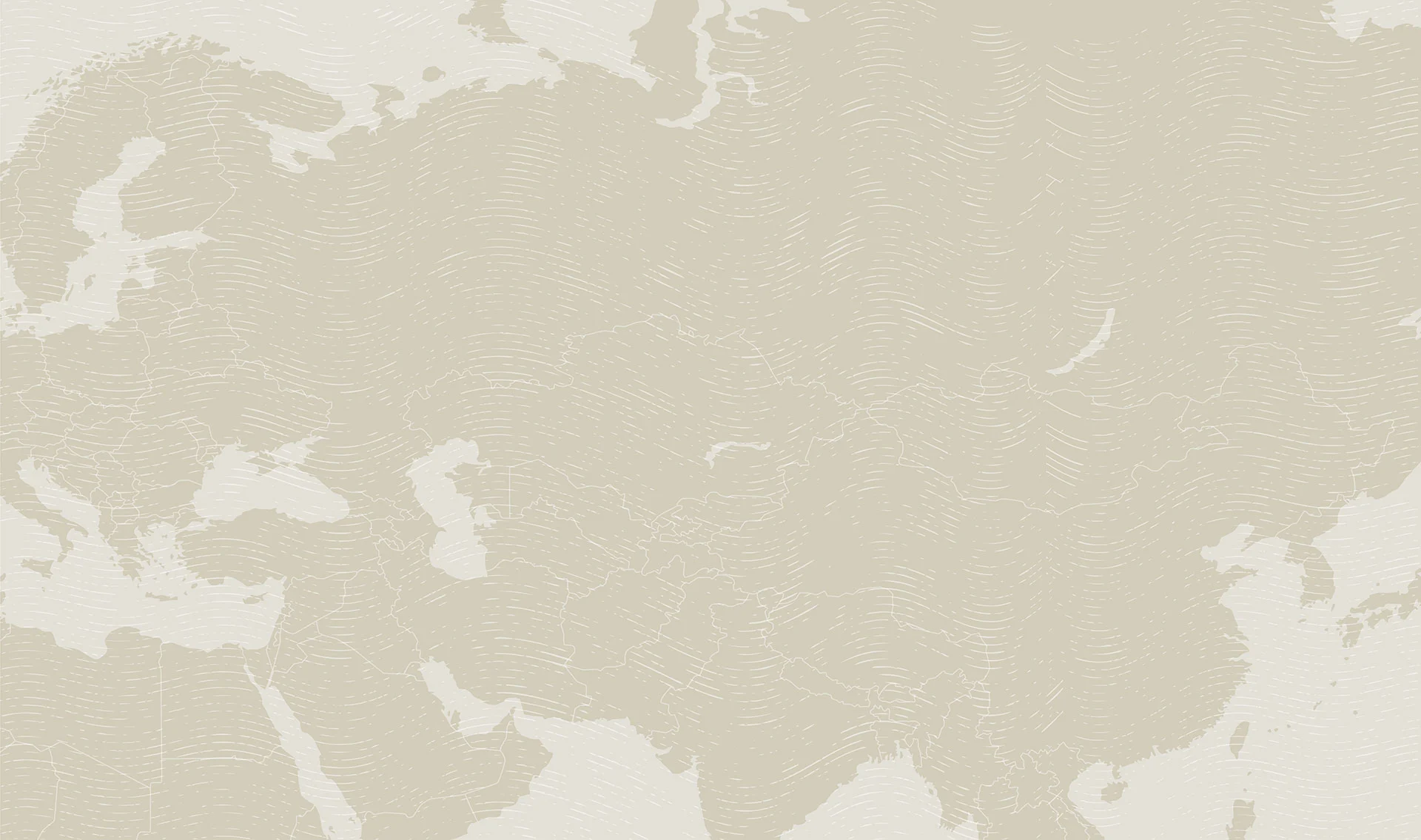South Korea: A Journey Through Time
Photo credit: ©Korea Tourism Organization Photo Korea Korea Tourism Organization Jeon Hyeongjun
The Land of Morning Calm from Seoul to Busan
Overview
South Korea brings old and new together in ways as harmonious as they are unexpected, a modern Asian nation looking towards the future, built on a foundation of ancient tradition and culture. From the modern edifices of the capital Seoul to the coastal wetlands of Yeosu, this immersive program showcases a dynamic and multi-faceted country from all angles to give you a rich appreciation of a fascinating corner of Asia.
Start in Seoul, with its juxtaposition of skyscrapers and ancient palaces; where a Michelin-star restaurant may be around the corner from a traditional street food market. Continue to the DMZ, learning about the country’s divided nature from a North Korean defector, and take a peek at North Korea across the verdant no man’s land. Head south though the South Korean heartland, home to rugged mountains, agricultural landscapes, and traditional villages. Learn about traditional Korean culture, intertwined with harvesting crops, tea ceremonies, rice wine brewing, and cooking traditional dishes. Finish on the coast, where a local expert introduces you to one of the world’s most important coastal wetlands, and where you can taste the freshest seafood in Busan’s famous Jagalchi Fish Market. Wrap up the journey in modern comfort, as a high-speed train whisks you back to Seoul for a final chance to say farewell to this amazing country.
Travels to: South Korea

Map

Itinerary
-
Days 1-2: Seoul (South Korea)

Begin in Seoul, capital of South Korea, the nation’s dynamic heart, starting with a visit to the grand Gyeongbokgung Palace; step back in time watching the traditional guard changing ceremony, and learn about Korea’s cultural legacy at the National Folklore Museum. Wander the charming streets of Samcheongdong, blending traditional hanoks with contemporary art galleries and cafes. Wrap up with the vibrant atmosphere (and maybe some grab and go street food) at the tantalizing Gwangjang Market.
HIGHLIGHTS
- Changing of the Guard at Gyeongbokgung Palace.
- Exploration of Samcheongdong’s unique blend of old and new.
- Savoring street food at Gwangjang Market.
-
Day 3: Day trip to the DMZ

Learn about, and see for yourself, Korea’s divided history, that continues to this day, with a visit to the Demilitarized Zone (DMZ). Begin at Imjingak Park, a symbol of peace and hope for reunification. Hear firsthand accounts from a North Korean defector and gaze across the border from Odusan Unification Observatory. Walk the historic Dokgae Bridge and ride the DMZ Gondola for a panoramic view of this poignant region.
HIGHLIGHTS
- Listening to a North Korean defector’s story.
- Viewing North Korea from Odusan Unification Observatory.
-
Days 4-6: Suwon, Jeonju, Hadong, Yeosu

Venture to Suwon to marvel at the architectural ingenuity of Hwaseong Fortress and try your hand at traditional Korean archery. Continue to a Korean Folk Village and see a folk performance, before heading to Daedunsan Mt. Provincial Park with its dramatic rock formations and iconic suspension bridge. Participate in a Moju brewing experience. Travel to Hadong, the cradle of Korean tea culture, and learn the art of tea making at a traditional plantation’s serene tea ceremony.
HIGHLIGHTS
- Try your hand at Korean archery at Suwon Hwaseong Fortress
- Learn to cook bibimbap, as important as it is delicious
- Moju brewing experience
- Tea ceremony at Hadong Wild Tea Plantation.
-
Days 7-8: Suncheon, Busan

Explore the scenic trails of Odongdo Island, home to vibrant camellias and evergreen trees. Visit the Suncheon Bay Nature Reserve for an enlightening walk through its pristine wetlands with a local expert to highlight this critical landscape’s features for you. In Busan, enjoy a dinner by Gwangalli Beach followed by a captivating drone show, and take in the highlights of this coastal metropolis.
HIGHLIGHTS
- Learn about Suncheon Bay’s important coastal wetlands from a local specialist.
- Step out above the waves on Busan’s Oryukdo Skywalk.
- Taste the freshest catch at Jagalchi Fish Market.
- Stroll the art-forward tResident interaction in Gamcheon Culture Village.
-
Days 9-10: Busan, return to Seoul

Conclude your South Korean adventure with a contemplative morning at Beomeosa Temple, engaging in meditation and a tea ceremony with a monk. Enjoy a farewell lunch at F1963, a repurposed wire factory turned cultural hub. Finally, board the KTX to Seoul, reminiscing about your journey as you speed towards the capital. Enjoy a final night to explore on your own before departure the following morning.
HIGHLIGHTS
- Meditation and tea ceremony at Beomeosa Temple.
- Farewell lunch at the innovative F1963 cultural complex.
Dates & Prices
Small group tour – max 16 travelers.
Land Tour Price, Per Person. Based on double occupancy and a minimum group size of 6 travelers.
-
2025 Dates
June 22 - July 1Inaugural departure led by Michel Behar!Nov 2 - 11This departure will be led by Michel Behar!Tour, double occupancy$7,895Single supplement$1,695
-
2026 Dates
June 7 - 16Special tour leader, Michel Behar!Nov 1 - 10Special tour leader, Michel Behar!Tour, double occupancy$7,995Single supplement$1,695
What's Included
-
Tour Includes
- Accommodations, as noted in the itinerary. Mostly 4-star properties, with one traditional (hanok) style property used.
- Breakfast daily, most lunches and a few dinners (9 breakfasts, 7 lunches and 2 dinners).
- Restaurant tips for included meals.
- Services of experienced, English-speaking local guides, drivers and other staff, including a MIR Tour Manager.
- Arrival/departure airport transfers. MIR will arrange for all travelers to be met on arrival and seen off on departure whether we make your airfare arrangements or not, provided you arrive and depart on the tour start/end dates in the tour start/end city.
- Ground transportation throughout the itinerary by coach, minibus or van (type of vehicle depends on group size).
- Guided sightseeing tours and entrance fees as outlined in itinerary.
- Special events, excursions and cultural performances per the itinerary.
- Baggage handling where available.
- Gratuities to local guides, drivers, porters and other service personnel.
- Complete pre-departure electronic document that includes detailed packing suggestions, reading list links, country-specific information, maps, travel tips and more.
- Assistance booking your custom flight arrangements (on request; please note that international airfare is not included in the land tour cost).
- Electronic final update bulletin, with any late news, updates and important information.
-
Not Included
- International airfare or taxes/fuel surcharges.
- Meals not specified as included in the itinerary.
- Partial single supplement charge, if requested or required.
- Items of a personal nature (phone calls, email, laundry, alcohol, excess baggage, etc).
- Gratuities to Tour Manager.
- Visa/passport fees, airport departure fees if required (note: no South Korean visa is required for U.S. passport holders).
- Expenses incurred as a result of delay, modification or extension of a tour due to causes beyond MIR’s control.
- Travel and trip cancellation insurance.
Activity Level
-
Level 2: Moderate
Level 2: Moderate
This small group tour in modern and cosmopolitan South Korea features long days walking and standing while touring, and some possibly long days in the touring vehicle. Only those fit to travel and who accept the local conditions should consider joining this program.
Travelers must be able to walk one to two miles a day, keeping up with fellow travelers. Footing can be an issue and travelers should be able to negotiate pavement, curbs, potentially uneven surfaces (possibly steep and/or wet), as well as unpaved terrain; and deal with situations without handrails or ramps. Some attractions are only accessible via steep staircases, and museums may not have elevators. Some smaller hotels also may not have elevators.
Past travelers to this region have also encountered challenges with plumbing, bureaucratic service, variety of locally available foods, and availability and quality of public restrooms.
Accommodations are planned to be four-star properties, with one night spent in a more rustic traditional (hanok-style) property. At that hotel the authentic hanok-style rooms do not have western furniture such as chairs, tables and beds. Sleeping arrangements are on floor-level futons, and seating is on the futon, or large floor cushions, or on the floor itself. Tables are low to the floor and are sat at or knelt at as well.













